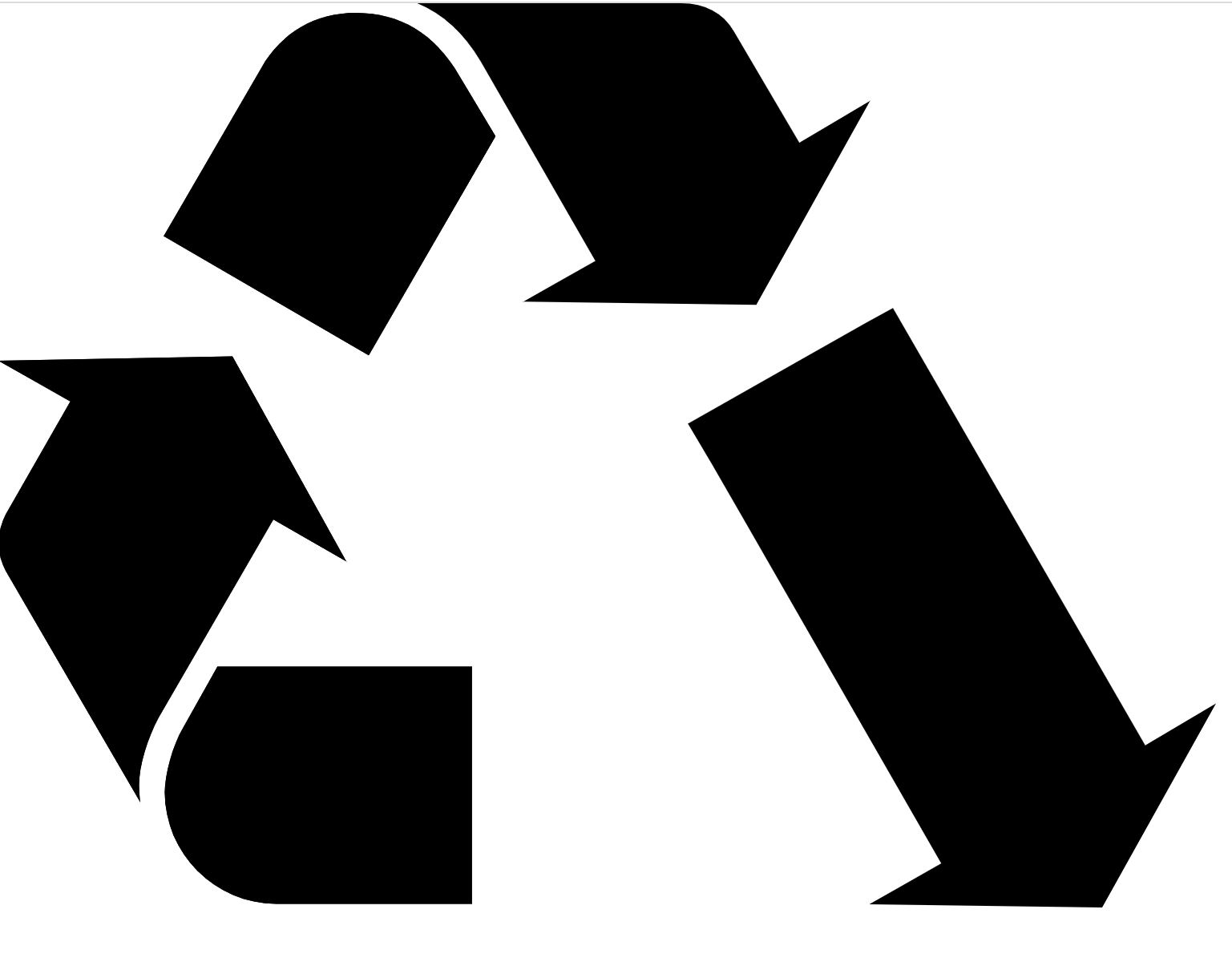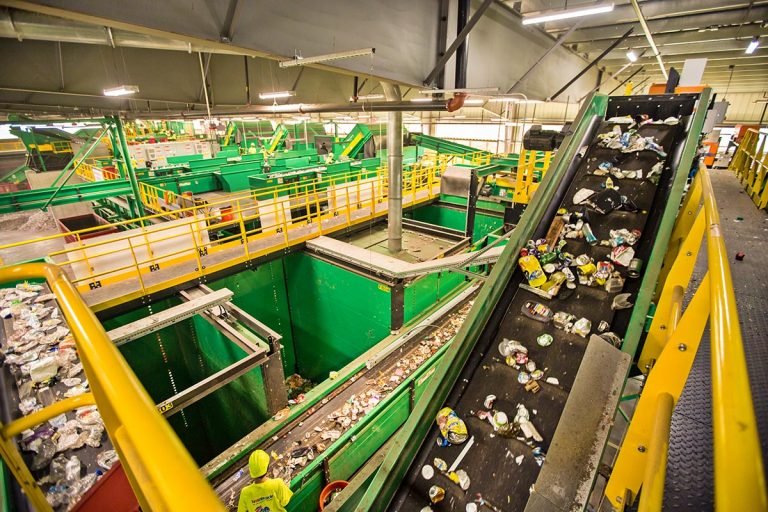Lexicon II: Key Words in Recycling
In writing about the plastics recycling industry in the US, I came across many new terms that I was not familiar with. Similar to Lexicon I, my article with key terms in environmental science, here are several terms and words to know related specifically to recycling, and more specifically to sustainability:
Bale
Bales of plastic
Bales refer to plastics or other materials kept together, much like a bale of hay, paper, or cotton. Bales are produced by dedicated machines, that typically compact plastics into large, tight, dense bales that stick together and don’t spring back into their original shape.
Bales are bought and sold in the market, and have particular specifications. For example, “mixed bulky rigid bale”, or “PET1”.
Bottle Deposit
This is the practice of attaching a value to a recyclable container, such as a bottles, cans, jars, or cartons made of glass, plastic, or metal.
As of July 2023, there are are ten U.S. states with container deposit legislation, known as bottle deposits, or "bottle bills" after the Oregon Bottle Bill, the first such legislation passed in 1971. These range from $0.05 to $0.15, depending on the state and the type of container.
Container deposit mandates a refundable deposit on types of recyclable beverage containers, with great benefit: studies show that the recycling rate for beverage containers is vastly increased with a bottle bill.
Bottle deposit for glass
The overall beverage container recycling rate in the US is approximately 33%, while states with container deposit laws have a 70% average rate of beverage container recycling. Michigan's recycling rate of 97% from 1990 to 2008 was the highest in the nation, as is its $0.10 deposit. Studies also show that beverage container legislation has reduced total roadside litter by between 30% and 64% in the states with bottle bills.
Circular Economy
A circular economy is a fundamental concept in thinking from top down about how we use resources. Today, after a chain of events and consumption, much of the materials humanity uses end up as waste, as opposed to being recycled.
In a circular economy, we would keep materials in use, eliminate waste, and regenerate natural systems. According to the Ellen MacArthur Foundation, an organization that actively promotes this cause, the circular economy is based on three principles, driven by design:
Eliminate waste and pollution
Circulate products and materials (at their highest value)
Regenerate nature
Emphasizing the need to a transition to renewable energy and materials, the circular economy is a resilient system that aims to reconcile and align net benefits for business, people, and the environment.
Symbol for down cycling
Down Cycling
Down cycling is the conversion of a material into a lower application than that of its previous life cycle, with an intent to still reuse it.
For example, plastics and paper often deteriorate after use, and therefore cannot be returned to the same quality material as the original.
A common example of the down cycling process includes transforming plastic bottles into carpeting or fleece fibers, and later turning fleece and carpeting materials into plastic lumber products.
Down cycling helps protect the environment by eliminating waste and making new products out of something old that would otherwise end up in a landfill.
EPR
Extended Producer Responsibility, or EPR, is the concept where brand owners, producers and material manufacturers pay for the end-of-life costs to recycle or dispose of products they put on the market. It is an environmental policy approach in which a producer’s responsibility for a product is extended to the post-consumer stage of a product’s life cycle.
Types of EPR are in place in countries around the world, including the US, Europe and Canada. Fees for producers vary based on the EPR program. Generally, fees help cover:
Material collection
Waste disposal
Technology upgrades
Educational materials
Program administration
Development of recycling end-markets
According to the OECD, an EPR policy is characterized by:
The shifting of responsibility (physically and/or economically; fully or partially) upstream toward the producer and away from municipalities; and
The provision of incentives to producers to take into account environmental considerations when designing their products.
While other policy instruments tend to target a single point in the chain, EPR seeks to integrate signals related to the environmental characteristics of products and production processes throughout the product chain.
Feedstock
Recycled feedstocks are materials or substances produced by the recycling of waste, which can be used as resources for the manufacture of new plastics.
Recycled feedstock supply is limited by less-than-ideal collection and sorting rates for post-consumer materials, especially plastics.
MRF
This is short for Materials Recovery Facility, a critical component of the recycling infrastructure. There are over 300 such facilities in the United States currently.
Material Recovery Facility - Resource Recycling
It is essentially a plant, a collection point of all mixed recycling materials that are collected from consumers as part of curbside recycling programs. MRFs are where the separation takes place between multi-stream, commingled recyclables into single-stream materials, ready for distribution and reintegration in the materials supply chain.
MRFs sort things like:
Cardboard and paper products
Plastics (e.g. PET bottles)
Glass bottles and jars
Metal containers (e.g. aluminum cans)
PCR
Post-Consumer Resin or PCR is recycled plastic, such as beverage bottles and other packaging. It offers a more sustainable source for making packaging films, containers, and many of the products that would otherwise be developed with virgin plastic resin, which is nowadays largely obtained from fossil fuels.
By using PCR instead of virgin plastic, manufacturers can make the same high-quality products with less environmental impact. Using PCR :
Lowers the amount of plastic sent to landfills
Shrinks one’s carbon footprint (traditional plastics production produces nearly 900 million tons of carbon dioxide each year)
Reduces the need to create new plastics from non-renewable petroleum products
Limits negative effects of plastics on the environment
Lowers amount of energy needed to produce new plastics (recycling a pound of PET plastic instead of making new can save up to 12,000 BTUs)
Satisfies environmentally conscious customers
Promotes compliance with industry regulations
Despite an increasing number of companies adopting ambitious PCR targets as part of their sustainability goals, there are challenges to using PCR. When plastics are recycled, they need to be properly sorted by type and thoroughly cleaned before being processed into new plastic flakes, pellets, or powder for reuse as PCR resin. Occasionally, despite using materials sourced from reputable recyclers, there are some impurities in the PCR resin, which can show up as specks or discolored spots in the finished products.
While acquiring good quality PCR resin can present some difficulties, taking advantage of recyclable plastics is a crucial step in protecting the environment and reducing our use of fossil fuels.
Recycling
Yes, recycling needs a reminder of its definition! Recycling generally always has limitations: after a few cycles, a used material is going to the landfill. Is that really recycling?
Technically recycling means there is no loss of quality (as opposed to down cycling above); it is a way of converting waste in to new material. It is a process to return material to a previous stage in a process that operates as a cycle.
The idea is to take used products or materials and turn them into the same type of product or similar level of value, such as glass bottles being melted down and used in making new glass bottles. In its technically correct form, it supposed to be an endless cycle.
Regrind
Plastic regrind is a type of material that has undergone at least one processing method. Even though this material has been processed once, it can be used again. This excess material is collected and ground into much smaller granules called plastic “regrind.”
It typically results from scrap material left over after processes such as injection molding, or extrusion, but it can be obtained after recycled plastic has been sorted, cleaned, and turned into regrind.
Importantly, material loses some of its qualities, and degrades through the process.
Resin Identification Code
This is the number in the center of the triangle of arrows.
The ASTM International Resin Identification Coding System, often abbreviated RIC, is a set of symbols appearing on plastic products that identify the plastic resin out of which the product is made.
Resin code for polyethylene terephthalate
It was developed in 1988 by the Society of the Plastics Industry (now the Plastics Industry Association) in the United States, but since 2008 it has been administered by ASTM International, an international standards organization.
In its original form, the symbols used as part of the RIC consisted of arrows that cycle clockwise to form a triangle that encloses a number.
1: polyethylene terephthalate (PETE) (beverage bottles, cups, other packaging, etc.)
2: high-density polyethylene (HDPE) (bottles, cups, milk jugs, etc.)
3: polyvinyl chloride (PVC) (pipes, siding, flooring, etc.)
4: low-density polyethylene (LDPE) (plastic bags, six-pack rings, tubing, etc.)
5: polypropylene (PP) (auto parts, industrial fibres, food containers, etc.)
6: polystyrene (PS) (plastic utensils, Styrofoam, cafeteria trays, etc.)
7:(OTHER)/(PLA) other plastics, such as acrylic, nylon, polycarbonate and polylactic acid.
The numbers also indicate general ease (and thus, cost-effectiveness) of recycling, with 1 being the easiest and 6 and 7 being very difficult.
Virgin Plastic
As opposed to PCR discussed above, virgin plastic is new, unused plastic material created from resin produced from natural gas or crude oil. These plastics have not been blended with scrap, waste, or previously used material.
This is clean, not contaminated, and is typically best used for packaging products such as food, or pharmaceuticals that require a high level of purity.
Sources:
“Container deposit legislation in the United States” - Wikipedia, April 2023
“Downcycling” - Wikipedia, August 2022
“Recycled Content” podcast episodes 2020 - 2023, hosted by the APR - Association of Plastics Recyclers.
“What Is a Materials Recovery Facility (MRF)?”, by Meredith Leahy - Rubicon Circular Economy Senior Manager
“Plastic Regrind Saves Injection Molding Materials and Money”, by Jenna Vogel - Kaysun Blog
“Regrinding Plastics”, by John Bozzelli - Prospector Knowledge Center
“Resin Identification Codes” - Wikipedia, September 2019
Paben, Jared. “How a Materials Recovery Facility Will Sort Flexible Plastics.” Resource Recycling News, December 2018





